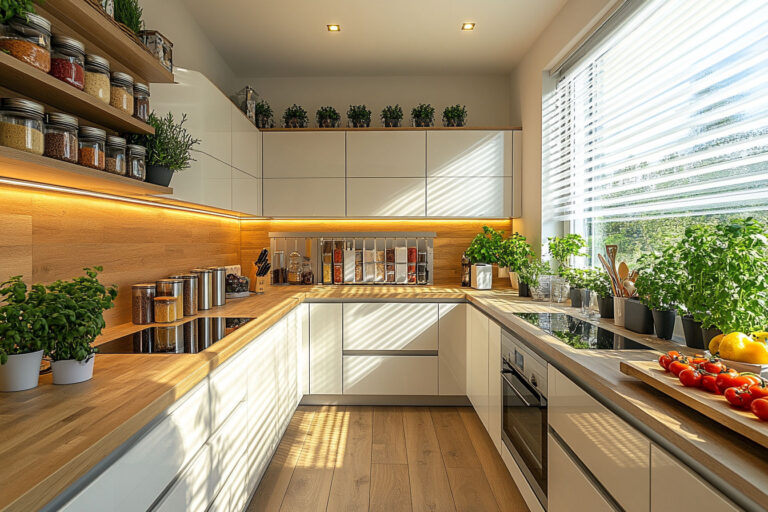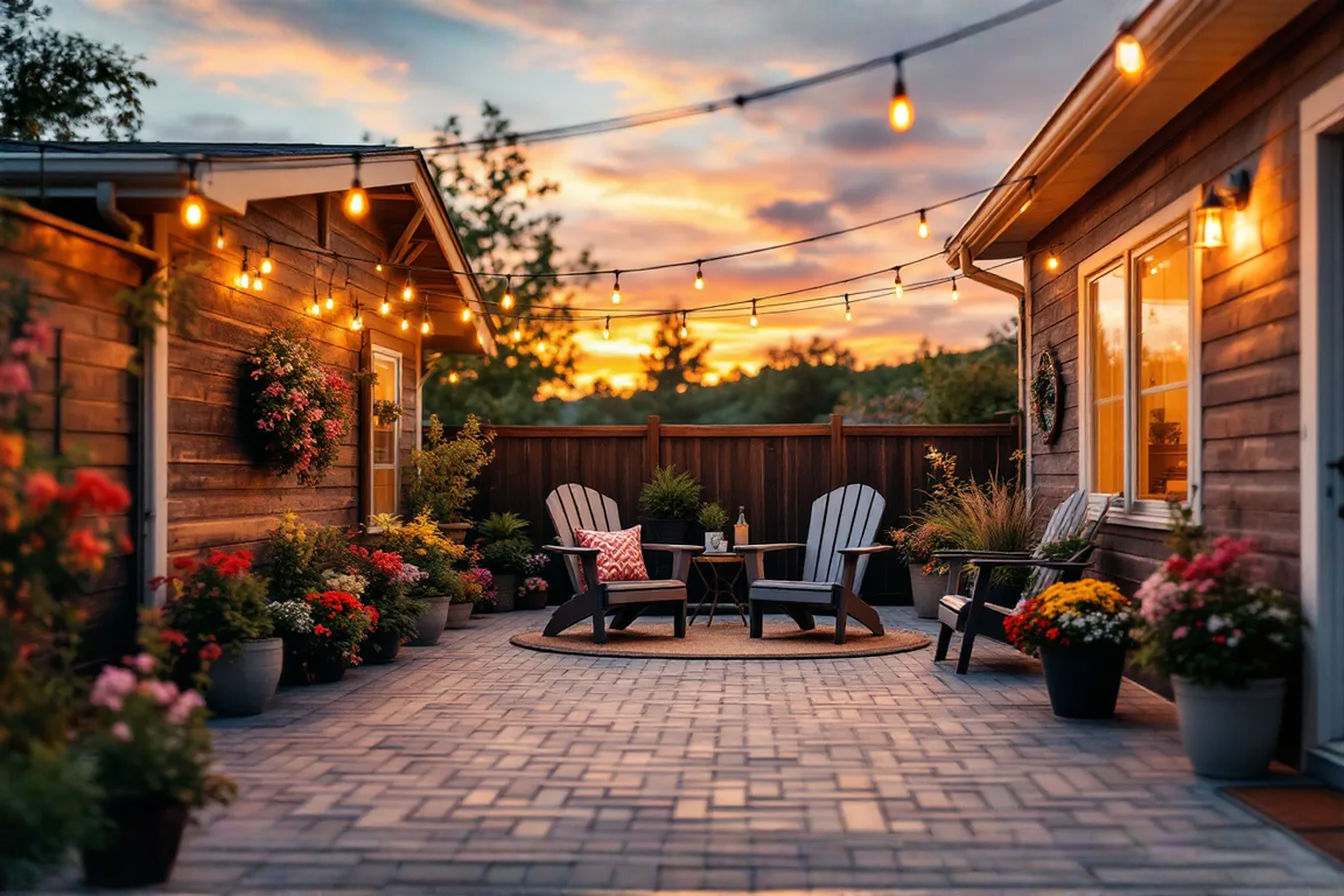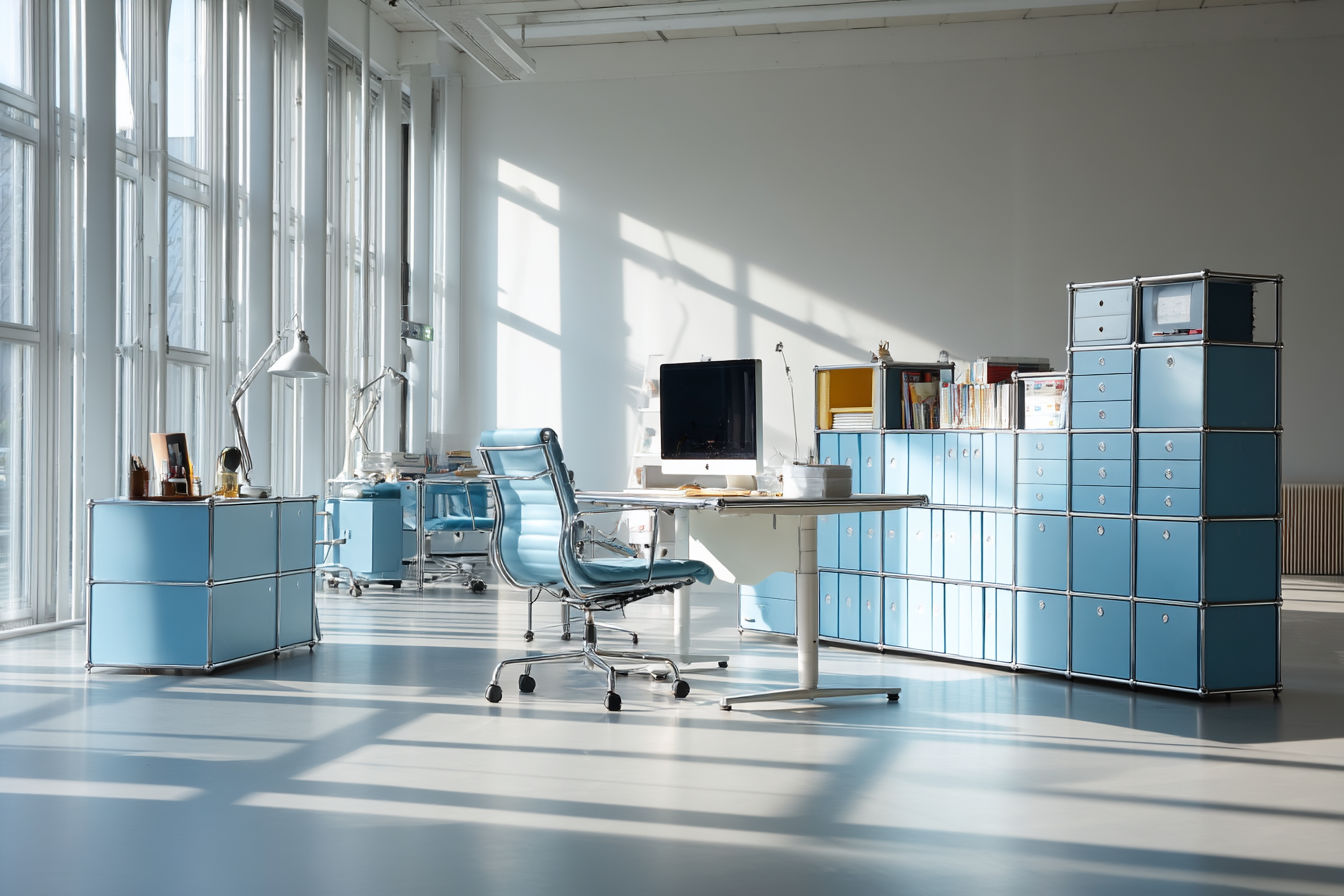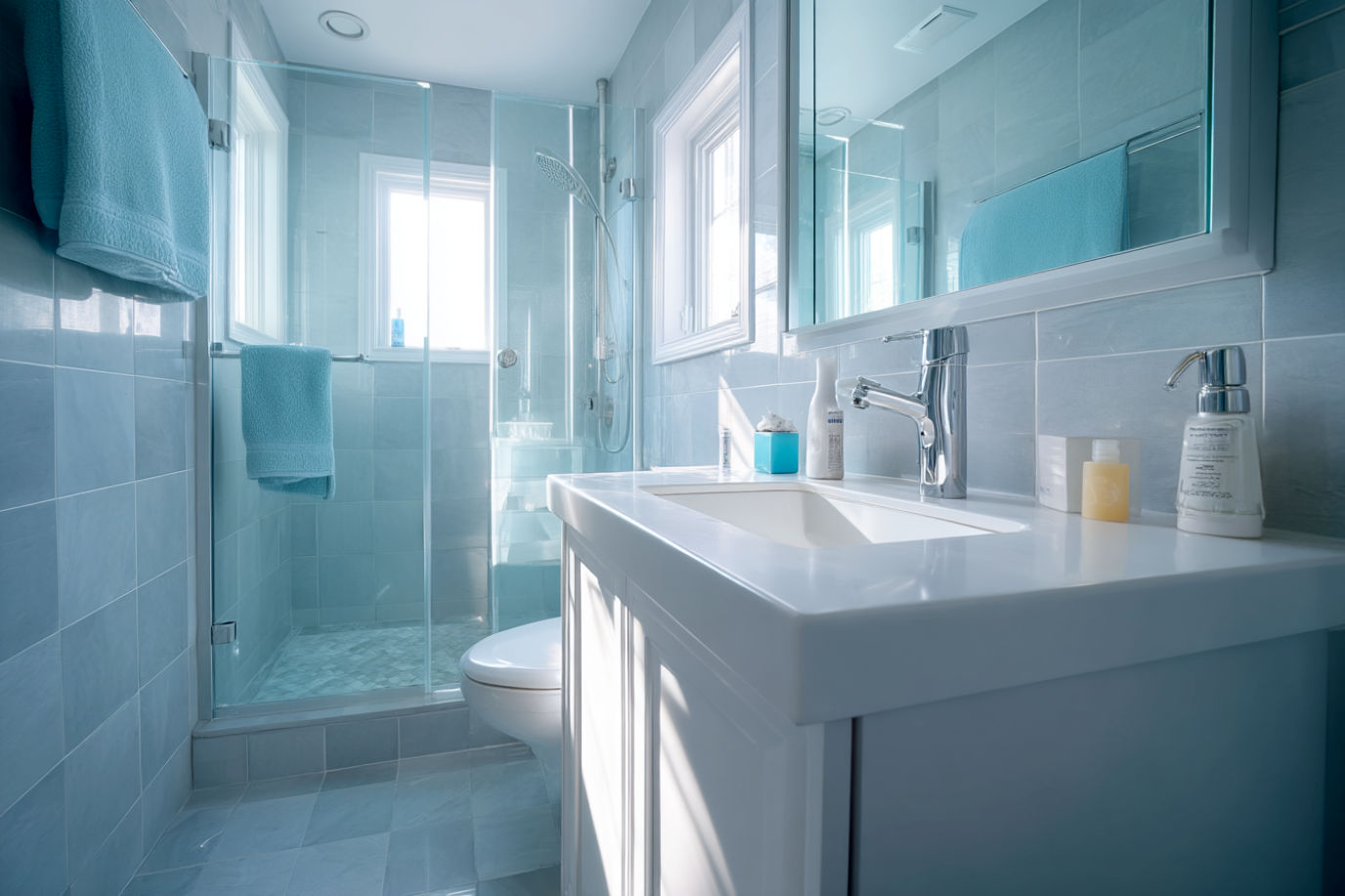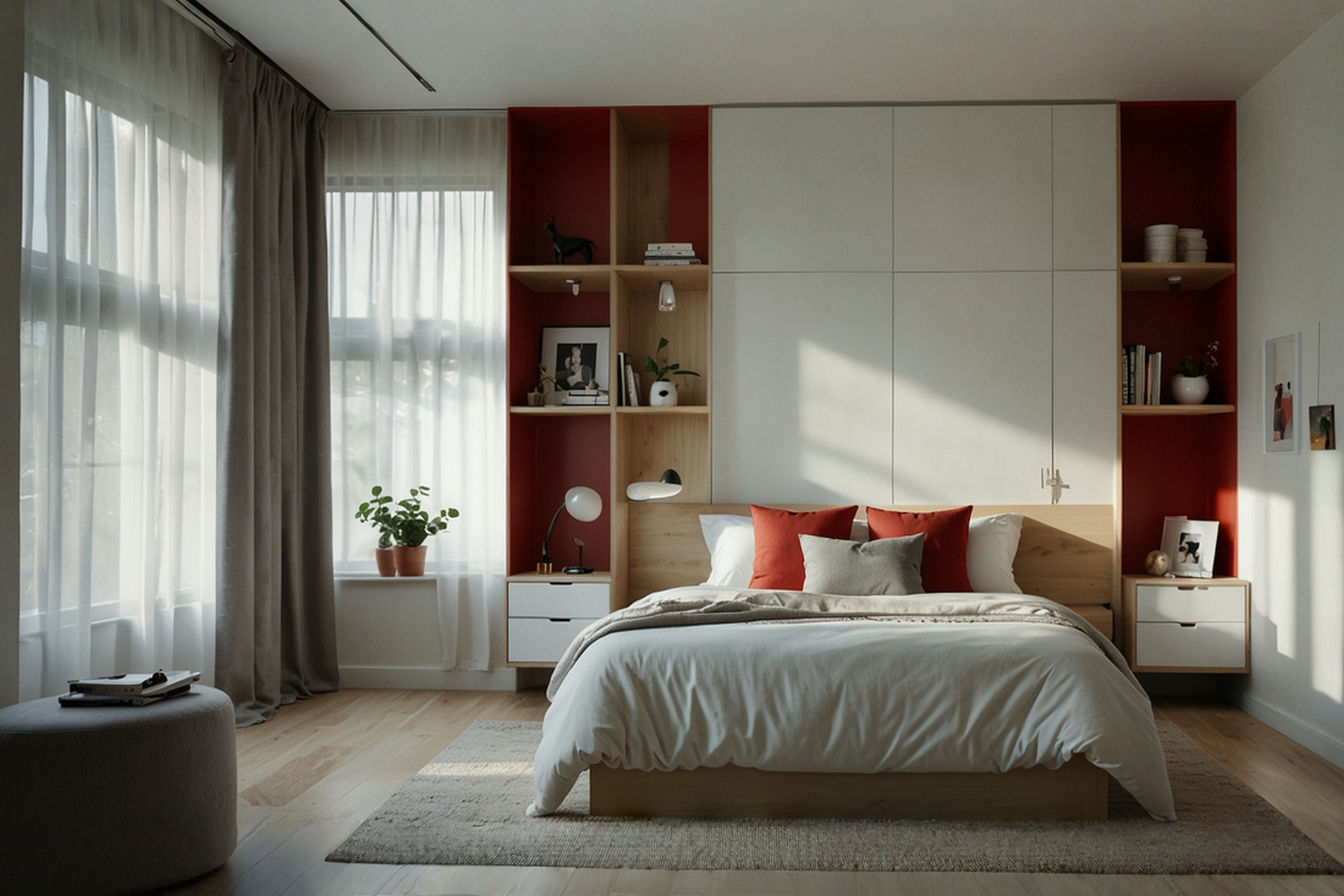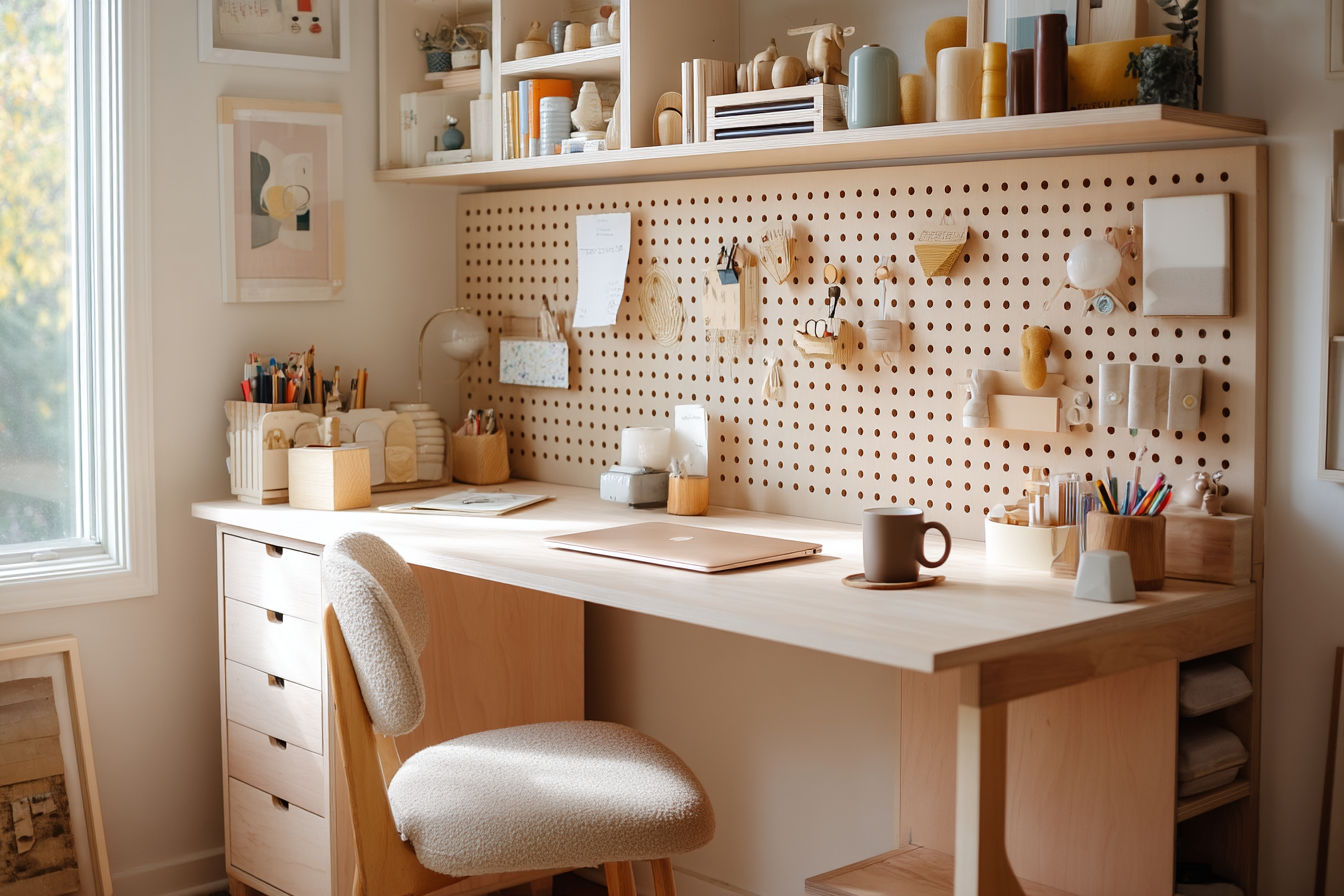This post may contain affiliate links. If you make a purchase through these links, we may earn a commission at no additional cost to you.
In today’s fast-paced world, our living and working environments constantly evolve, yet traditional furniture remains stubbornly static. Space constraints, changing needs, and the desire for personalization have created a perfect storm that demands innovative solutions. Enter Everblock furniture—a revolutionary approach to designing flexible spaces that adapts as quickly as your life changes.
These life-sized building blocks transform the concept of furniture from permanent fixtures to dynamic elements that respond to your evolving requirements. Unlike conventional pieces that serve a single purpose, these modular components can be reconfigured into desks, shelves, room dividers, or virtually any structure you can imagine—all without tools or specialized skills.
The beauty of this modular furniture system lies in its simplicity. The same blocks that form your home office desk today might become your dining table tomorrow or a retail display next month. This versatility empowers you to maximize your space’s potential while minimizing waste and unnecessary purchases.
This comprehensive guide explores how Everblock furniture is redefining our relationship with space. From understanding the fundamental concepts to discovering creative applications across residential, commercial, and event environments, you’ll gain insights into how these innovative building blocks can solve your unique space challenges.
Whether you’re dealing with a cramped apartment, a constantly evolving workspace, or simply seeking furniture that matches your creative spirit, these modular solutions offer unprecedented freedom. By the end of this guide, you’ll understand not just what makes this system special, but how it can transform your approach to designing flexible, adaptive environments that truly work for you.
What Is Everblock Furniture?
Everblock furniture represents a paradigm shift in how we conceptualize functional spaces. At its core, this system consists of modular building blocks that interlock to create virtually any furniture piece imaginable. These aren’t simply decorative elements—they’re fully functional, weight-bearing components designed for real-world use in homes, offices, events, and commercial settings.
The foundation of this revolutionary furniture system is rooted in childhood building toys but engineered at life size with adult functionality in mind. Each block features precision-molded connection points that allow for secure assembly without tools, adhesives, or specialized skills. This unique approach democratizes furniture design, putting creative control directly in the hands of users rather than manufacturers.
Manufactured from high-impact polypropylene, these durable components resist staining, moisture, and daily wear. The premium-grade plastic composition offers surprising strength while remaining lightweight enough for easy reconfiguration. Available in a spectrum of vibrant colors, these building blocks enable both functional and aesthetic customization that traditional furniture simply cannot match.
The modular system includes various shapes and sizes designed to work together seamlessly. Standard blocks typically measure 12 inches long, 6 inches wide, and 6 inches high, though half-blocks, quarter-blocks, and specialized components like finishing caps and connector pieces expand the design possibilities exponentially. Additional accessories such as shelving plates, desk surfaces, and connector brackets further enhance functionality.
Unlike traditional furniture that serves a single prescribed purpose, Everblock components can transform based on immediate needs. This fundamental difference represents a philosophical shift from furniture as a fixed asset to furniture as an adaptable resource. When requirements change, these modular pieces don’t become obsolete—they simply evolve into new configurations, eliminating waste and extending their useful life indefinitely.
The Evolution of Modular Design in Modern Spaces
The concept of modular furniture isn’t entirely new—variations have existed since mid-century designers began experimenting with interchangeable components. However, traditional modular systems typically offered limited reconfiguration options within predetermined forms. A modular sofa might allow for rearrangement of cushions or sections, but it remained fundamentally a sofa.
Everblock furniture has accelerated this evolution by introducing truly fundamental building blocks rather than pre-designed components. This approach resembles architectural construction more than conventional furniture assembly, allowing for structural creativity previously impossible with consumer products. The system effectively bridges the gap between permanent built-ins and temporary furnishings.
Modern living spaces demand this level of flexibility as urban dwellings grow smaller and multifunctional spaces become necessary. Contemporary environments frequently serve multiple purposes—home office by day, entertainment space by evening, guest room by night. Fixed furniture forces compromises in these scenarios, while reconfigurable solutions adapt to each function optimally.
The limitations of traditional furniture become particularly apparent during transitions. Moving typically requires disassembling complex pieces, only to discover they don’t fit new spaces. Damage during transport often renders items unusable. Modular building blocks eliminate these challenges—they disassemble completely, transport efficiently, and reconfigure to match new environments exactly.
Market trends confirm the growing popularity of adaptable furniture solutions. Consumers increasingly prioritize versatility and longevity over disposable furnishings. This shift reflects broader cultural movements toward sustainability, personalization, and conscious consumption. As these values continue gaining traction, modular systems like Everblock will likely become even more mainstream in residential and commercial environments alike.
Core Benefits of Everblock Furniture
Unmatched Versatility
The defining characteristic of Everblock furniture is its extraordinary adaptability to diverse needs. Unlike specialized pieces that serve singular functions, these modular components can transform into virtually any structure imaginable. This versatility proves invaluable as space requirements fluctuate over time.
Consider a home office scenario: The same components that create your desk can later form a bookshelf, room divider, or entertainment center. This adaptability extends to commercial settings where display needs change seasonally or event spaces requiring frequent reconfiguration. The flexibility to repurpose rather than replace furniture represents both practical and economic advantages.
The system’s versatility stems from its fundamental building-block approach rather than prescribed designs. This distinction empowers users to create custom solutions precisely matched to their specific requirements rather than adapting their needs to available furniture options. When circumstances change, the furniture evolves accordingly without additional investment.
Toolless Assembly
Perhaps the most revolutionary aspect of this furniture system is its accessibility to users without construction skills or specialized tools. Traditional furniture assembly often requires significant time, equipment, and expertise—creating frustration and sometimes safety hazards. Everblock’s interlocking system eliminates these barriers.
The blocks connect via a simple yet secure interlocking mechanism that provides structural integrity without fasteners or adhesives. This design allows even those with no building experience to create complex, functional pieces. Assembly becomes an intuitive process resembling childhood building toys rather than a technical challenge requiring instruction manuals and specialized hardware.
This toolless approach drastically reduces assembly time while eliminating common assembly errors. Components can be quickly reconfigured as needed, encouraging experimentation and refinement without commitment to permanent structures. The psychological barrier to furniture changes diminishes significantly when the process becomes simple and enjoyable rather than daunting.
Durability and Weight Capacity
Despite their modular nature, these building blocks demonstrate impressive structural strength. The high-impact polypropylene material resists cracking, warping, and degradation even under substantial weight loads and daily use. This durability often exceeds that of comparable flat-pack furniture that relies on particle board and mechanical fasteners.
Weight capacity depends on specific configurations, but properly assembled structures can support hundreds of pounds. Tables and desks easily accommodate standard equipment, while shelving units safely hold books, displays, and household items. The interlocking connection system distributes weight across multiple components, creating structures that become stronger as they grow larger.
This strength doesn’t compromise portability—individual blocks remain lightweight enough for single-person handling. This combination of strength and manageability makes the system particularly valuable in environments requiring frequent reconfiguration, such as retail displays, exhibition spaces, or multi-use residential areas.
Sustainability and Reusability
Environmental considerations increasingly influence furniture purchasing decisions, and Everblock’s reusable nature presents significant ecological advantages. Traditional furniture often ends up in landfills when styles change or minor damage occurs. Modular systems, however, can be perpetually repurposed, dramatically extending their usable lifespan.
The environmental benefits extend beyond longevity. When components eventually wear out, the polypropylene material is fully recyclable. Additionally, the ability to purchase exact replacement pieces rather than entire furniture sets reduces material consumption and manufacturing impacts. This targeted replacement approach minimizes waste while maintaining functionality.
The system’s sustainability credentials are further enhanced by its adaptability. Rather than purchasing multiple specialized pieces for different functions, users can reconfigure existing components as needs change. This versatility reduces the total quantity of furniture required for diverse activities, decreasing overall resource consumption and environmental footprint.
Cost-Effectiveness Over Time
While the initial investment in a modular building block system may exceed some traditional furniture options, the long-term economics tell a different story. Conventional furniture typically serves a single purpose, requiring multiple purchases for different functions. Modular components serve multiple purposes through reconfiguration, reducing the total furniture budget significantly.
The system’s durability further enhances its economic value proposition. Where particleboard furniture might require replacement after a few years, high-quality building blocks maintain their integrity for decades. This longevity dramatically improves the lifetime cost comparison, particularly in high-use environments like commercial spaces or family homes.
Additional cost advantages emerge during transitions. Moving costs decrease when furniture disassembles into compact, manageable components rather than bulky finished pieces. The need for replacement due to moving damage virtually disappears. Furthermore, adaptation to new spaces happens through reconfiguration rather than new purchases, generating substantial savings during life transitions.
Popular Everblock Furniture Applications
Home Office Solutions
The dramatic increase in remote work has highlighted the limitations of traditional home office furniture. Fixed desks and storage units often consume valuable space while serving only a single function. Everblock components offer a more intelligent approach through adaptive workstations that evolve with changing requirements.
Modular desks represent the most common home office application, with configurations ranging from compact corner units to expansive executive workstations. The building block structure allows precise customization to room dimensions and ergonomic preferences. Height adjustability—achieved simply by adding or removing blocks—provides an affordable alternative to expensive standing desks.
Storage solutions form another crucial home office application. Custom shelving units can be designed to exact specifications, maximizing vertical space while accommodating specific equipment and materials. Combined desk-and-storage configurations create comprehensive workstations that would be prohibitively expensive as conventional furniture. The ability to reconfigure as storage needs change eliminates the common problem of outgrowing office furniture.
Cable management—a persistent challenge in home offices—becomes significantly easier with modular furniture. The block structure naturally creates channels for routing cables, while custom openings can be incorporated exactly where needed. This integrated approach reduces clutter and improves both functionality and aesthetics compared to aftermarket cable management solutions for conventional desks.
Living Space Transformations
Residential applications extend far beyond home offices into every room of contemporary homes. Room dividers represent one of the most valuable applications, particularly in studio apartments or open-concept spaces. Unlike permanent walls, these reconfigurable partitions can be adjusted, moved, or completely removed as needs change, creating privacy without sacrificing flexibility.
Entertainment centers and media walls showcase the system’s adaptability to technological needs. Custom configurations accommodate specific equipment dimensions while incorporating cable management and ventilation considerations. As technology evolves—screens change size, components are added or removed—the furniture adapts accordingly without replacement.
Seating options demonstrate the versatility of these building blocks in living environments. Benches, stools, and platform bases for cushioned furniture provide alternatives to conventional seating at a fraction of the cost. These pieces coordinate aesthetically with other Everblock elements while maintaining the system’s signature reconfigurability.
Storage solutions for living areas include bookcases, display shelving, and functional room dividers with integrated storage. These applications address common space challenges in contemporary homes while adding visual interest through color and configuration options not available in mass-produced furniture.
Retail and Commercial Applications
The retail sector has embraced modular building block furniture for its unparalleled display flexibility. Store fixtures must frequently adapt to changing merchandise, seasonal promotions, and evolving brand presentations. Traditional display furniture quickly becomes obsolete when requirements change, whereas modular systems simply reconfigure to new specifications.
Point-of-sale counters represent a particularly valuable application, combining durability with customizability. These high-traffic installations require robust construction while often needing reconfiguration as operational needs evolve. Modular components provide the necessary strength while allowing seamless modification without replacement costs.
Pop-up retail installations leverage the system’s portability and rapid assembly. Temporary stores, event merchandise booths, and seasonal kiosks benefit from fixtures that transport efficiently and assemble quickly without tools. The professional appearance of well-designed modular displays elevates these temporary installations to match permanent retail environments.
Brand expression through custom fixtures represents another commercial advantage. The blocks’ color options allow precise matching to brand standards, creating cohesive retail environments that reinforce visual identity. This customization typically costs significantly less than traditional custom fixtures while offering greater flexibility for future changes.
Event and Temporary Installations
The events industry has discovered extraordinary value in modular building block systems. Trade show booths, exhibition displays, and event furnishings traditionally involve substantial rental costs or expensive custom fabrication. Reusable modular components dramatically reduce these expenses while offering superior customization and creating distinctive visual presentations.
Registration desks, speaker podiums, and information kiosks built from these components combine professional appearance with practical advantages. The ability to transport in compact form and assemble on-site without tools reduces labor costs and setup time. Event-specific branding—achieved through color selection and configuration—creates cohesive environments that enhance attendee experience.
Temporary walls and space division solve common challenges in event venue management. Creating separated areas within larger spaces, defining traffic flow, and establishing functional zones become simple tasks with reconfigurable building blocks. These temporary structures assemble quickly and disassemble completely, leaving no trace in multi-use venues.
Seating and hospitality installations complete the event applications, from simple bench seating to elaborate lounge configurations. The system’s modularity allows precise adaptation to venue constraints and attendance expectations. Post-event, these components store compactly until needed for the next installation, eliminating ongoing storage costs associated with conventional event furniture.
Educational and Institutional Settings
Educational environments benefit tremendously from furniture that adapts to diverse learning activities. Classrooms increasingly transition between lecture formats, collaborative work, and individual study—often within a single class period. Modular furniture facilitates these transitions without the noise and disruption of moving conventional pieces.
Library and research settings leverage the system’s versatility for creating adaptable study spaces. Individual carrels, group work tables, and media stations can be configured and reconfigured as usage patterns change. This adaptability proves particularly valuable as educational institutions increasingly emphasize collaborative learning alongside traditional individual study.
Laboratory and makerspace applications highlight the system’s functional versatility. Custom workstations for specific equipment or activities can be created at a fraction of the cost of specialized laboratory furniture. When curriculum or research needs change, these spaces adapt without the substantial capital expenditure typically associated with laboratory renovations.
Administrative applications extend to reception areas, conference rooms, and flexible office spaces. Institutions facing budget constraints discover significant value in furniture that serves multiple functions through reconfiguration rather than requiring separate pieces for each application. This approach maximizes the utility of limited resources while creating dynamic, adaptable environments.
Step-by-Step Guide to Designing Your Everblock Furniture
Planning Your Design
Successful Everblock furniture projects begin with thoughtful planning that balances functional requirements with aesthetic goals. Start by precisely measuring your available space, noting any constraints like electrical outlets, windows, or doors that might impact furniture placement. Create a scale drawing or digital layout to visualize different configurations before purchasing components.
Functional requirements should drive your initial design decisions. Consider activities the furniture will support, equipment it must accommodate, and weight capacities needed. For workspaces, incorporate ergonomic principles to ensure comfortable use. Storage applications require assessment of specific items to be stored and frequency of access.
Budget planning represents another crucial preparation step. Determine whether you’ll build your collection over time or complete the project at once. If phasing implementation, design with expansion in mind to ensure future additions integrate seamlessly. Consider creative approaches like designing multipurpose pieces that serve different functions at different times to maximize value.
Sketching preliminary designs helps clarify requirements and identify potential challenges. Most users find that simple graph paper drawings suffice for planning, though digital design tools—including specialized Everblock planning applications—can provide more precise visualization. Create multiple design options to compare functionality, aesthetics, and block requirements.
Selecting the Right Blocks
Block selection combines practical and aesthetic considerations to achieve both functionality and visual appeal. Begin with structural components that provide the foundation and support for your design. Full-size blocks typically form the core structure, while specialized pieces address specific functional requirements.
Color selection significantly impacts the final appearance of your creation. Consider the existing color scheme in your space and how the furniture will complement or contrast with it. Some users prefer monochromatic designs for a sleek, professional appearance, while others embrace multicolored patterns for creative environments or children’s spaces.
Quantity calculations require attention to detail. Count blocks by type and color based on your design sketch, then add approximately 10% extra to accommodate design refinements during assembly. Remember that structural integrity often requires additional supporting blocks not immediately visible in preliminary sketches.
Accessory components like desk surfaces, connector brackets, and finishing pieces complete your materials list. These elements often transform basic block structures into fully functional furniture with finished appearances. Review furniture-specific requirements like appropriate surface materials for desks or shelving based on intended use.
Assembly Techniques
The basic assembly process follows intuitive stacking patterns similar to childhood building toys, but several techniques enhance structural integrity for functional furniture. Begin by creating a stable base layer, ensuring it’s level and properly aligned. This foundation determines the stability of the entire piece.
For maximum strength, employ overlapping patterns that distribute weight across multiple blocks rather than creating single vertical stacks. This approach, similar to brick-laying techniques, dramatically increases load-bearing capacity and prevents separation under pressure. Critical junctions may require additional reinforcement through strategic block placement.
Large furniture pieces benefit from internal support structures invisible in the finished design. These internal frameworks prevent torqueing or distortion under weight while maintaining the desired external appearance. Consider incorporating these reinforcements at key stress points, particularly for shelving, desks, or seating applications.
Connection techniques vary based on specific requirements. Standard stacking provides sufficient stability for most applications, while connector pins create more permanent bonds for frequently moved pieces. Bracket systems offer additional reinforcement for shelving or cantilevered designs where stability is paramount.
Finishing Touches
Surface treatments transform basic block structures into refined furniture pieces. Desktop surfaces, typically acrylic or wood panels, create smooth, functional work areas. These can be secured through gravity (simply resting on the block structure) or permanently attached with specialized brackets for added stability.
Aesthetic enhancements include decorative finishing caps that conceal connection points and create smooth exterior surfaces. These elements, available in matching or contrasting colors, significantly elevate the visual sophistication of the finished piece. Consider strategic placement of these finishing elements on visible surfaces while leaving utilitarian areas unfinished for future reconfiguration.
Integration with traditional furniture components often creates the most functional results. Consider incorporating conventional desk chairs, cushions for modular seating, or standard lighting fixtures to enhance comfort and functionality. These hybrid approaches combine the flexibility of modular structures with the ergonomic benefits of specialized components.
Final adjustments should address both structural integrity and functional details. Test weight capacity before placing valuable equipment or materials on new structures. Verify stability by applying pressure at different points and directions. Make ergonomic adjustments to ensure comfortable use, particularly for workstations or seating where dimensions significantly impact user experience.
Everblock Furniture for Different Space Challenges
Small Apartment Solutions
Limited square footage presents unique challenges that modular furniture systems address exceptionally well. Studio apartments particularly benefit from multifunctional pieces that transform based on immediate needs. A structure that serves as room divider by day might reconfigure into a desk, dining table, or platform bed base by night, effectively doubling usable space.
Vertical storage solutions maximize often-overlooked wall space in compact dwellings. Custom shelving units can be designed to exact room dimensions, utilizing full height and width while maintaining a minimal footprint. These configurations often provide three to four times the storage capacity of freestanding furniture within the same floor space.
Transitional pieces solve the entertainment challenges common in small apartments. Modular coffee tables expand to dining height for meals, then return to standard height for everyday use. Television stands incorporate storage for media, gaming equipment, and associated technology without requiring separate furniture pieces.
Privacy creation represents another valuable application in shared small spaces. Partial-height room dividers define functional zones without triggering claustrophobia or blocking natural light. These dividers can incorporate shelving or desk surfaces on either side, further maximizing utility while maintaining distinct activity areas within limited square footage.
Open Concept Living
While open floor plans create an appealing sense of spaciousness, they present challenges in defining functional zones and controlling acoustics. Modular room dividers address these issues without sacrificing the fundamental benefits of open concept design. Unlike permanent walls, these flexible partitions can be reconfigured seasonally or even daily.
Strategic zone definition through furniture placement creates mental boundaries within open spaces. Modular components allow precise customization to room dimensions and traffic patterns, creating intuitive pathways between functional areas. This thoughtful division maintains visual openness while establishing psychological separation between activities.
Acoustic management improves dramatically with strategically placed modular elements. Block constructions naturally absorb and diffuse sound, reducing the echo effect common in open spaces. Partial-height walls and strategic furniture placement create sound barriers that enhance conversation areas while minimizing disruption between zones.
Visual coordination throughout open spaces establishes cohesive environments despite functional divisions. Using consistent colors and configurations across different furniture elements creates a unified design language that ties diverse functional areas together. This approach preserves the aesthetic benefits of open concept living while introducing practical separations.
Dynamic Workspace Design
Professional environments increasingly require flexible configurations to accommodate diverse activities and team structures. Modular furniture systems enable rapid transitions between individual work, collaborative sessions, and presentation formats without the disruption and expense of conventional furniture movement or replacement.
Adaptable workstations represent the foundation of dynamic office design. Desks that expand or contract based on project requirements, storage that reconfigures to accommodate changing document types, and divisional elements that create privacy when needed all contribute to more responsive work environments.
Collaborative spaces benefit particularly from reconfigurable elements. Meeting areas can transform from formal conference settings to casual brainstorming configurations in minutes. Presentation walls reconfigure to become dividers or additional workspace when not in use. This multifunctionality maximizes utility from limited square footage.
Individual workspace customization improves employee satisfaction and productivity. Modular systems allow personalization of workstation dimensions, storage configurations, and privacy levels without requiring separate furniture for each preference. As team members or assignments change, these spaces adapt without capital expenditure.
Temporary and Transitional Spaces
Spaces serving temporary or transitional functions—guest rooms, seasonal areas, or interim facilities—present unique challenges that modular furniture elegantly solves. The ability to completely disassemble and compact store components when not needed eliminates the wasted space associated with permanent furnishings for occasional use.
Quick deployment capabilities prove invaluable for urgent space transitions. Disaster response centers, temporary healthcare facilities, and emergency accommodations require immediate setup without specialized skills or tools. Modular components enable rapid creation of functional spaces in crisis situations, then disassemble completely when no longer needed.
Seasonal adaptations become simple with reconfigurable components. Outdoor living areas transition from open entertaining spaces to sheltered, intimate settings as weather changes. Retail environments transform for holiday merchandising without fixture investment. These adaptations occur without replacing furniture—merely reconfiguring existing elements.
Transition management during renovations or moves provides another valuable application. Temporary structures serve essential functions while permanent solutions develop. These interim installations maintain operational continuity without wasting resources on short-term furniture that would otherwise be discarded when transitions complete.
Conclusion: Reimagining Spaces Through Modular Innovation
As we’ve explored throughout this guide, Everblock furniture represents far more than just an alternative to conventional furnishings—it embodies a fundamental shift in how we interact with our living and working environments. In a world where space constraints, frequent transitions, and multifunctional requirements have become the norm, these modular building blocks offer a refreshingly adaptable solution that conventional furniture simply cannot match.
The system’s core strengths resonate across every application we’ve examined: unparalleled versatility that responds instantly to changing needs; democratic accessibility through toolless assembly that empowers users of all skill levels; exceptional durability that withstands daily use; environmental sustainability through perpetual reuse rather than replacement; and compelling long-term value despite the initial investment. These advantages have proven transformative in homes, offices, commercial spaces, and temporary installations alike.
Looking toward the future, the relevance of modular furniture systems appears poised to increase rather than diminish. Ongoing urbanization continues to intensify space pressures in residential settings. Workplace evolution demands ever-greater flexibility as collaboration patterns and technology needs rapidly evolve. Sustainability considerations increasingly influence purchasing decisions across all sectors. Each of these trends favors adaptive solutions over static ones, positioning building block systems at the forefront of contemporary furniture design.
Perhaps most significantly, Everblock returns creative control to users rather than manufacturers. While traditional furniture dictates how spaces function through predetermined forms and fixed dimensions, these modular components invert this relationship. They enable individuals to create environments precisely matched to their specific needs, preferences, and spaces—then modify those environments at will as requirements change, without additional purchases or specialized assistance.
As you consider your own space challenges, we encourage you to rethink fundamental assumptions about what furniture can and should be. The ability to create exactly what you need, when you need it, represents a genuinely revolutionary approach to environment design. Whether you’re addressing immediate space constraints in a studio apartment, creating adaptive workspaces for a growing business, or designing dynamic installations for events, Everblock’s modular system offers unprecedented creative freedom alongside practical functionality.
The future of our spaces is not fixed—it’s flexible, adaptable, and limited only by imagination. With modular building blocks as your foundation, you’re equipped to create environments that truly work for you, evolving as seamlessly as your life does. We invite you to reimagine your relationship with space and discover the transformative potential of furniture that changes with you, not against you.

